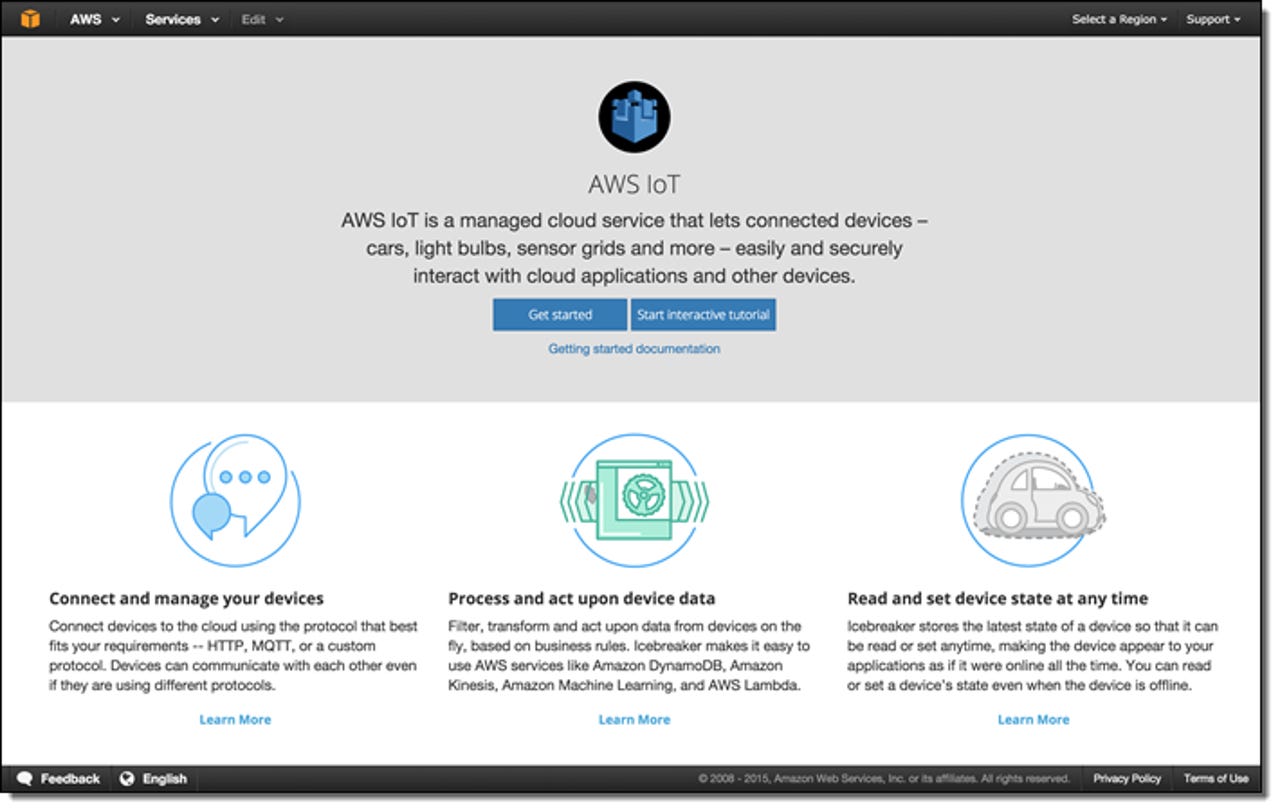Amazon preps Internet of Things tools for consumer, industrial data growth


LAS VEGAS---Amazon Web Services is tapping into a number of trends that have taken hold in business technology in the last year, from machine learning to open source containers to the Internet of Things.
AWS re:Invent
Speaking during the second day of the tech giant's annual cloud expo Re:Invent on Thursday, Amazon CTO Dr. Werner Vogels highlighted opportunities presented especially by the "Industrial Internet of Things," citing data fueling from General Electric turbines and Shell oil well sensors into AWS.
"There are so many cool things happening in this world of IoT," Vogels exclaimed, trotting out examples such as Internet-connected toothbrushes, sensors on cars that can deliver information to insurance companies or connected ice hockey helmets for monitoring impacts on a player's head.
"Cloud has removed all the constraints that we used to have," said Vogels. "Everything that used to be hardware is now software."
Nevertheless, challenges remain regardless of how many resources -- financial or brainpower -- a business has at its disposal.
While dreams and ideas for IoT devices and use cases are seemingly endless, actually building the apps are not easy, Vogels admitted, outlining a number of stumbling blocks from network security to mapping specific functionality across multitudes of devices.
Attempting to answer these problems in one place, Amazon unveiled the AWS IoT Platform for building IoT-intended applications.
Available in beta, the platform includes SDKs for using to connect devices to the cloud, network capabilities to communicate with cloud apps, and certificates for securely identifying devices and encrypting data on the network.
Streaming data analytics, for example, is still very challenging, Vogels acknowledged, reassuring machine learning is becoming integrated into almost everything within the AWS cloud. Vogels pointed toward Wednesday's debut of the Kinesis Firehose, a new analytics service for loading streaming data onto AWS, as one example.
AWS continued to unveil more new products aiming to support, manage and monetize big data analytics on Thursday.
On the back-end infrastructure, AWS is adding a new instance type, X1, supporting two terabytes of memory available for enterprise workloads, such as installations of SAP HANA, Microsoft SQL Server, Apache Spark, and Presto.
AWS is also prepping a new instance for its burstable model for customers looking to use up extra processing power credit. Directed more toward websites that receive moderate traffic, the t2.nano will consist of 1 vCPU and 512 MB of memory for running full core performance for over an hour on a full credit balance.
Both of these instances fall within Amazon's Elastic Compute Cloud (EC2), a web service interface designed to make building for the cloud at scale easier for developers.
To bolster EC2 further, Amazon introduced the EC2 Container Registry, a fully-managed service for storing container images and launching container replications.
"One of the core pieces missing in EC2 was a registry," Vogels told the thousands of developers in the audience, explaining the registry is important to the development process for outputting images before testing and then storing ahead of launch time.
On the front end, Amazon announced the AWS Mobile Hub for building applications quicker by offering developers more choices up front about what they want to build for and what analytics they want to reap through a few button clicks.
Vogels insisted the Mobile Hub will help speed up mobile development because developers will only have to worry about functionality for end users rather than back-end processes.
AWS also doubled down on language support for its Lambda service, first introduced at Re:Invent last year, for uploading and running code without imposing server concerns and choices on developers. In addition to Node.js and Java, developers can now write Lambda functions in Python.
Cloud is becoming the place for developing mobile systems, Vogels opined, describing mobile as the "window to functionality in the cloud."
Images via Amazon Web Services